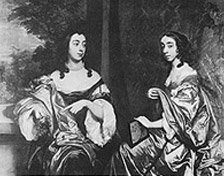This project is a collection of largely unedited texts by female authors from the 17th to the 20th centuries. There are 75 texts, most of them written in English in the United States and Great Britain. The majority of the authors are Caucasian, but the site also includes works by 12 Native American and two African American authors. The 17th, 19th, and 20th centuries are well represented here, but curiously only one text is reproduced from the 18th century.
The subjects covered are extremely diverse and include commentaries on such topics as nature, native-white relations, emancipation, imperialism, social and sexual mores, wet nursing, Christianity, and women’s suffrage. The site’s entire body of writing can be handily searched by keyword and further specified by such factors as time, place, or ethnicity. This feature will be of great use to teachers searching for writings on particular themes, especially for including comparative insights on chosen topics. For instance, students could easily compare perspectives of race expressed by 17th-century English authors to those of their contemporary counterparts in the United States. Teachers could also direct their students to examine the differing connotations of “empire” to a 17th-century English poet and a 19th-century American suffragette.
The absence of historical frameworks within which to place these authors and interpret their writings, however, presents a problem. Teachers who are unable to do further contextual research will have to restrict their classroom use of these documents to close readings of the sources themselves.
This site is aimed at undergraduate and graduate students and emphasizes the pedagogy surrounding the process of editing texts. About half of the included texts have not been published in modern editions, and the Women Writers Project directs viewers to learn about and gain experience in editing, annotating, and introducing selections from writers of different periods. It provides guidelines, examples, practice exercises, and bibliographic information on primary and secondary literature to assist students in such exercises. The “Guide to Research” directs readers to other useful links, including relevant journals (some of which are readable online) and research centers, such as the Victorian Research Center at Indiana University. These links will most assist readers engaging in scholarly research, rather than those whose emphasis is on teaching.
Since the site’s focus is on teaching the editorial process (especially the work of establishing the context necessary to introduce writers’ works), readers will find virtually no biographical or contextual information here to help them establish a framework for unedited authors (69 of the total 75 authors). For unedited authors, the site only provides a name, details of the work’s publication history, and ethnicity.
The seven texts by edited writers provide excellent models with detailed introductions and notes that focus on historical and literary concerns of each writer. Teachers will find here such works as “The Countess of Lincolnes Nurserie,” a 17th-century treatise on wet nursing, which can be used to engage students to consider how motherhood or the female body was viewed in this period in comparison to our own. Teachers will also uncover the essays of a 17th-century Yorkshire Quaker which could be used to discuss how religious orthodoxy was defined in this particular context.



